PMM Bulkhead Union — One-Touch Push-Fit Bulkhead Union for Compressed-Air Systems
The PMM Bulkhead Union is a one-touch pneumatic fitting engineered to deliver fast, tool-free tube connections through panels or mounting plates in compressed-air systems. Designed specifically for confined-space assembly and frequent connect/disconnect operations, the PMM Bulkhead Union combines the speed and convenience of push-to-connect technology with a robust bulkhead mounting configuration. Threaded parts are factory seal-coated for simplified installation, and the product line supports both metric and inch tubing sizes to accommodate global pneumatic installations.
Introduction
Pneumatic systems are widely used across factories, automation cells, robotics, test benches, and process equipment. The efficiency of installation and maintenance in these systems is often constrained by access to fittings, the need for repeatable leak-free joints, and the speed at which operators or technicians can perform service. The PMM Bulkhead Union addresses these requirements by providing a compact, reliable, and fast-to-install bulkhead fitting that integrates a push-fit tube connection on one side and a threaded bulkhead port on the other.
This article provides an in-depth technical review of the PMM Bulkhead Union, including functional description, detailed specifications and dimensions, materials and construction, key features, use-case examples, comparative analysis with other common bulkhead fitting types, benefits and limitations, installation and maintenance guidance, and troubleshooting tips for field use.
Technical Overview
The PMM Bulkhead Union is a push-to-connect bulkhead fitting intended exclusively for compressed air. The fitting is a through-panel union: one end accepts a flexible or semi-rigid pneumatic tube via a one-motion push-in engagement; the other end threads into a panel, manifold, or bracket and is factory-sealed (seal-coated) to simplify and accelerate mounting. The push-fit mechanism supports secure insertion in a single motion and rapid release by depressing the sleeve (collet) while pulling the tube—typical connect/disconnect cycle time is 1–2 seconds.
Key operational parameters:
- Intended medium: Compressed air only
- Operating pressure range: 0 to 150 psi (≈ 0–990 kPa / 0–9.9 kgf/cm²)
- Vacuum capability: Down to −29.5 inHg (−750 mm Hg, approx. 10 Torr)
- Temperature range: 32–140°F (0–60°C)
The PMM (PC/PMM type) suffix denotes the design optimized for installations where space is constrained. The fitting incorporates both internal and external hex features to improve accessibility during assembly. The hex flats permit partial engagement with a wrench even when radial access is limited, enabling technicians to tighten or loosen the threaded portion from either side of a thin mounting plate.
How the Push-Fit Mechanism Works
The push-fit connector section consists of the following functional elements:
- Collet with metal teeth: Grips the tube body and prevents axial pull-out once the tube is fully inserted.
- Release sleeve (collet ring): When depressed, retracts the teeth to release the tube for removal.
- Internal O-ring seal: Forms the pressure-tight interface between tube OD and fitting body.
- Support insert/back-up: Optionally present on soft tubing to prevent collapse under vacuum/pressure cycling.
This architecture provides high performance for cyclic operations and frequent service cycles and does so without tools, which is particularly valuable in assembly-line environments and service desks where turnaround time matters.
Specifications and Dimensions
The tables below summarize the dimensional and performance data for the PMM Bulkhead Union product family. Data are representative of typical PMM Bulkhead Union items across the size range; for exact dimensions for a particular part number, consult the manufacturer’s datasheet or engineering drawings.
Performance Specifications
| Parameter | Value | Notes |
|---|---|---|
| Medium | Compressed air only | Not rated for hydraulic fluids, fuels, or aggressive chemicals |
| Maximum Operating Pressure | 150 psi (≈ 990 kPa / 9.9 kgf/cm²) | Static pressure rating; transient spikes should be considered in system design |
| Vacuum Capability | Down to −29.5 inHg (≈ −750 mm Hg / 10 Torr) | Suitable for light vacuum applications within stated temperature limits |
| Operating Temperature Range | 32–140°F (0–60°C) | Temperature limits are bounded by polymer/Seal material performance |
| Thread Sealing | Factory-applied seal coating (seal-coated) | Designed to eliminate need for additional thread tape or sealant in typical installations |
| Connection Type | Push-in tube (one-touch) / Threaded bulkhead | Push-in release by depress-and-pull; bulkhead mount through panel or bracket |
Dimensions and Weights — Metric Tube Series
| Model (φD‑PT) | Tube OD (mm) | Thread | Overall Length (mm) | Thread Length (mm) | Hex AF (mm) | Flange Dia (mm) | Approx. Weight (g) |
|---|---|---|---|---|---|---|---|
| PMM(φ4‑PT1/8) | 4.0 | PT 1/8 | 27 | 8 | 9 | 13 | 6 |
| PMM(φ6‑PT1/8) | 6.0 | PT 1/8 | 29 | 8 | 9 | 14 | 8 |
| PMM(φ8‑PT1/4) | 8.0 | PT 1/4 | 32 | 9 | 12 | 16 | 13 |
| PMM(φ10‑PT3/8) | 10.0 | PT 3/8 | 36 | 10 | 14 | 18 | 18 |
| PMM(φ12‑PT3/8) | 12.0 | PT 3/8 | 38 | 10 | 14 | 20 | 22 |
| PMM(φ16‑PT1/2) | 16.0 | PT 1/2 | 44 | 12 | 17 | 23 | 34 |
Dimensions and Weights — Inch Tube Series
| Model (Inch Tube) | Tube OD (inch / mm) | Thread | Overall Length (mm) | Thread Length (mm) | Hex AF (mm) | Flange Dia (mm) | Approx. Weight (g) |
|---|---|---|---|---|---|---|---|
| PMM 5/32 (≈4.0mm) | 5/32″ (≈4.0) | NPT 1/8 | 27 | 8 | 9 | 13 | 6 |
| PMM 3/16 (≈4.8mm) | 3/16″ (≈4.8) | NPT 1/8 | 29 | 8 | 9 | 14 | 8 |
| PMM 1/4 (≈6.35mm) | 1/4″ (≈6.35) | NPT 1/4 | 32 | 9 | 12 | 16 | 13 |
| PMM 5/16 (≈7.94mm) | 5/16″ (≈7.94) | NPT 3/8 | 36 | 10 | 14 | 18 | 18 |
| PMM 3/8 (≈9.53mm) | 3/8″ (≈9.53) | NPT 3/8 | 38 | 10 | 14 | 20 | 22 |
| PMM 1/2 (≈12.7mm) | 1/2″ (≈12.70) | NPT 1/2 | 44 | 12 | 17 | 23 | 34 |
Note: The dimensions in the tables above are typical production values for the PMM family. Final part dimensions and weights vary by specific compound, plating options, and optional features. Always consult the manufacturer’s engineering drawings for final installation planning.
Materials and Build Quality
The PMM Bulkhead Union family is engineered with materials selected for a balance of mechanical strength, chemical compatibility with compressed air environments, and dimensional stability over temperature cycling. Typical construction elements include:
- Body: High-performance engineering polymer (PC/PMM type — polycarbonate or poly(methyl methacrylate) blend) to provide toughness, dimensional stability, and resistance to impact during assembly. The polymer body reduces weight relative to all-metal designs while maintaining adequate mechanical strength for panel-mounted pneumatic connections.
- Collet and release sleeve: The release sleeve is typically a durable acetal (POM) or similar engineering polymer for low friction and high wear resistance. The internal collet contains stainless-steel retention teeth to ensure reliable grip on tubing across repeated cycles.
- Seals: Primary O-ring seals are typically made of nitrile rubber (NBR) for general-purpose air applications. For applications requiring improved chemical or high-temperature resistance, Viton® (FKM) or other elastomer options may be offered as alternatives.
- Threaded insert/hex section: Threaded elements are commonly machined from brass for ease of thread formation and corrosion resistance, and are sometimes nickel- or chrome-plated. Threaded parts are factory-applied with a seal-coating compound to eliminate the need for field-applied sealants in many installations.
- Plating/finish: Metal components are typically plated or passivated to resist corrosion in industrial environments. Polymer surfaces may be UV-stabilized where outdoor or UV exposure is expected.
This material combination produces a fitting that resists cracking under repeated mechanical stress, maintains sealing integrity over many cycles, and remains lightweight for assembly-line use. The stainless-steel collet teeth provide reliable mechanical retention for both hard and soft pneumatic tubing while the polymer body reduces the risk of galvanic corrosion in mixed-metal assemblies.
Key Features
The PMM Bulkhead Union incorporates several features engineered to improve performance, assembly efficiency, and serviceability. The most notable include:
- One-touch push-in connection: Enables immediate tube insertion without tools—connect in one motion.
- Tool-free disconnection: Depress the collet sleeve and pull to release the tube; ideal for rapid maintenance and testing.
- Bulkhead mounting with seal-coated threads: Threaded portion is factory-sealed to reduce install time and prevent common thread leakage without additional tape or sealant.
- Internal/external hex features: Hex flats accessible from both sides of a panel allow wrench engagement when radial clearance is limited—critical for confined-space installations.
- Metric and inch sizes: Supports φ4–φ16 mm tube ODs and 5/32″–1/2″ inch tube ODs to fit international standards.
- High cycle life: Engineered for frequent connect/disconnect cycles typical of diagnostic and maintenance workflows.
- Wide operating range: Pressure up to 150 psi and vacuum capability down to −29.5 inHg make it versatile for many pneumatic applications.
- Compact profile: Short overall length and compact flange diameter enable use where panel depth and clearance are constrained.
- Low leak risk: O-ring sealing and factory-applied thread coating reduce the risk of leak paths common in hand-sealed joints.
Use Cases and Applications
The PMM Bulkhead Union is purpose-built for applications where fast assembly and space constraints are primary considerations. Illustrative use cases include:
1. Factory Automation and Robotics
Pneumatic grippers, end-effectors, and auxiliary actuators frequently require tubing to be routed through robot wrists, arm brackets, or protective panels. The PMM Bulkhead Union permits through-panel connections without the need to pass long lengths of tubing through moving joints, simplifying maintenance and replacement of tooling.
2. Control Panels and Pneumatic Manifolds
Control cabinets and relay panels often require a tidy, accessible interface between external compressed-air supply lines and internal manifold plumbing. Bulkhead unions provide a clean interface and enable straightforward removal from the panel for servicing without disturbing internal plumbing.
3. OEM Equipment and Machine Build
Machine builders value fast, repeatable assembly processes. The PMM Bulkhead Union reduces installation labor by eliminating the need to apply thread tape on each assembly and accelerates commissioning through tool-free tube connections.
4. Maintenance-Intensive Systems
Lines that undergo frequent change-out (test rigs, laboratory instrumentation, and modular production lines) benefit from push-fit fittings for rapid swap-over and minimal downtime. The PMM Bulkhead Union supports repeated service cycles with minimal tools and training.
5. Confined-Space Installations
Thin brackets, confined enclosures, and tight machine housings where radial access is limited are common in packaging and semiconductor equipment. The dual hex feature and compact profile are tailored to these environments.
6. Light Vacuum and Laboratory Applications
Provided operating temperature and materials are compatible, the PMM Bulkhead Union is suitable for light vacuum applications (down to approximately 10 Torr) such as low-vacuum line routing for instrumentation or control systems.
Comparison with Similar Products
To place the PMM Bulkhead Union in context, the table below compares it with two common alternatives: a standard polymer push-to-connect bulkhead union without specialized hex features, and a traditional brass bulkhead union.
| Attribute | PMM Bulkhead Union | Standard Push-Fit Bulkhead (Polymer) | Brass Bulkhead Union (Metal) |
|---|---|---|---|
| Typical Materials | Engineering polymer body (PC/PMM), stainless collet, brass thread insert | Polymer body, stainless collet, brass insert | Brass body, brass collet/insert, elastomer seals |
| Tool-Free Tube Release | Yes (push/pull collet) | Yes | No — usually requires wrench and/or tubing removal with tools |
| Bulkhead Thread Sealing | Factory-applied seal coating | Usually requires field tape or sealant | Often requires tape or thread seal; metal-to-metal fit can provide mechanical sealing depending on design |
| Confined Space Install | Optimized with internal/external hex | May lack dual-hex access | Often larger and heavier; may be harder to install in tight spaces |
| Operating Pressure | Up to 150 psi | Varies; typically up to 150 psi | Typically higher pressure capability (varies with seal design) |
| Chemical/Temperature Resistance | Limited by polymer and elastomer choice (0–60°C standard) | Similar limitations | Better high-temperature and solvent resistance when paired with appropriate seals |
| Weight | Lightweight | Lightweight | Heavier |
| Cost | Moderate | Lower to moderate | Higher |
Summary of comparison: The PMM Bulkhead Union offers a balanced solution aimed at quick assembly, confined-space installation, and routine serviceability. Brass bulkhead unions provide superior high-temperature and some chemical resistance but at the cost of weight, tooling needs, and installation time. Standard polymer push-fits are similar but may lack the optimized hex features and factory-applied thread sealing that speed installation and reduce field variation.
Benefits and Limitations
Benefits
- Rapid installation and maintenance: Push-fit and seal-coated threaded parts reduce assembly time and the probability of installation errors.
- Confined-space compatibility: Internal/external hex geometry facilitates access when radial clearance is restricted.
- Reduced need for specialized tools: Tool-free tube engagement and quick-release reduce dependency on torque wrenches or thread sealing tools for many typical installations.
- Lightweight construction: Polymer construction reduces overall system weight compared with all-metal alternatives—valuable in mobile or articulated systems.
- Vacuum capable: Supports light vacuum applications in addition to positive-pressure pneumatic systems.
Limitations
- Media restriction: Intended for compressed air only — not rated for hydraulic fluids, fuels, or aggressive chemicals unless specific elastomer/material options are specified by the manufacturer.
- Temperature constraints: Standard elastomers and polymers limit operating temperature to 0–60°C; higher-temperature environments require alternate material options.
- Not a high-pressure hydraulic fitting: While 150 psi is suitable for many pneumatic systems, the PMM family is not intended for high-pressure hydraulic service.
- Cyclic wear: Frequent connect/disconnect cycles can eventually wear collet teeth and seals; lifecycle depends on application duty and maintenance practice.
Installation and Maintenance Guide
Proper installation and routine maintenance are essential to achieve the expected performance and service life from PMM Bulkhead Unions. The steps and guidelines below are industry best practices tailored to the PMM product family.
Pre-Installation Checks
- Verify the fitting model and tube size match. Confirm thread type (PT or NPT) and panel hole size for bulkhead mounting.
- Inspect the fitting for shipping damage, cracked polymer, or foreign material in the thread or push-fit bore.
- Ensure the panel or bracket thickness is within the recommended range for the specified thread length.
Panel Mounting Procedure
- Drill or punch the panel hole to the recommended diameter for the fitting. Deburr the hole edges to prevent polymer abrasion on insertion.
- Insert the threaded portion through the panel. If an outer hex is present, hand-start the threading to prevent cross-threading.
- Use a wrench on the accessible hex to tighten the bulkhead into place. Because the threads are factory-seal-coated, follow the manufacturer’s recommended torque values; typically, hand-tighten plus up to one-quarter to one-half turn with a wrench—avoid over-torquing polymer bodies to prevent cracking.
- If an access nut or jam nut is provided, tighten it from the opposite side to lock the fitting in place, again observing torque limits.
Tubing Preparation and Insertion
- Cut the tubing squarely with a proper tubing cutter. Avoid scissors or knives that may create irregular cuts or pinch the tube.
- Deburr or chamfer the cut end if recommended by the tube manufacturer. Inspect the OD for nicks or flat spots that can compromise sealing or retention.
- Align the tubing with the push-fit bore and push straight in until it bottoms against the internal stop. You should feel a distinct engagement.
- Perform a gentle pull test to confirm the tube is retained by the collet teeth.
Leak Checking
- Pressurize the system to the intended working pressure, then inspect fittings for audible leaks and bubble-test with a soap solution if necessary. Pay particular attention to the thread junction and the push-fit interface.
- If the thread shows signs of leakage, verify that the fitting was tightened within the recommended torque range and that the panel interface is flat and free of deformation.
Disassembly
- Depressurize the system before attempting removal.
- Depress the collet sleeve fully and pull the tubing out while holding the sleeve depressed. For tubing that may have adhered to the fitting, rocking the tube slightly while depressing the collet can help release it.
- Remove the fitting from the panel by using the hex flats. If an anti-rotation nut is present, loosen it first.
Routine Maintenance and Inspection
- Inspect seals and collet teeth every 6–12 months (intervals depend on duty cycle) for signs of wear, cracking, or deformation.
- Replace O-rings or the entire fitting if leaks develop that cannot be cured by re-tightening within recommended torque limits.
- Keep spare fittings and O-ring kits on hand for production-critical equipment to minimize downtime.
- Avoid exposure to oil, solvents, or aggressive cleaning agents unless the specific material options are rated for those chemicals.
Storage and Handling
- Store fittings in a clean, dry environment away from direct sunlight to avoid UV degradation of polymer components.
- Avoid stacking heavy objects on packaged fittings to prevent deformation of threads or polymer bodies.
Troubleshooting — Common Issues and Remedies
Below are typical field issues and practical remedies when working with PMM Bulkhead Unions.
Leak from Threaded Bulkhead
- Possible causes: inadequate engagement, cross-threading, contaminated threads, or over-torque damage.
- Remedy: Remove the fitting, inspect and clean threads, re-apply and re-install. If threads are damaged, replace fitting. Confirm panel surface is flat and not deformed.
Push-Fit Not Retaining Tube
- Possible causes: incorrect tube OD (undersized tubing), damaged collet teeth, or debris in bore.
- Remedy: Verify tube dimensions, inspect collet teeth for damage, clean bore, replace fitting if retention teeth are worn.
Difficulty Releasing Tube
- Possible causes: internal corrosion, debris, or tubing stuck due to residual pressure.
- Remedy: Ensure system is depressurized, depress the sleeve fully while pulling the tube. If stuck, cut the tube behind the collet and use a pick to depress the collet and clear debris.
Intermittent Leak at Push-Fit Interface
- Possible causes: damaged O-ring, cut/damaged tube end, or insufficient insertion depth.
- Remedy: Cut and re-prep tubing, fully insert, or replace O-ring/fitment.
Ordering Information and Model Coding
PMM Bulkhead Union model codes follow the convention MODEL(φD‑T), where φD represents tube outer diameter and T denotes the thread type. Metric tube sizes use PT threads; inch sizes use NPT threads in the inch-coded product family. Example codes and their meanings:
- PMM(φ4‑PT) — Metric product for 4 mm tube OD, threaded with PT 1/8 (example mapping)
- PMM(φ8‑PT) — Metric product for 8 mm tube OD, threaded with PT 1/4
- PMM 1/4 — Inch product for 1/4″ tube OD, threaded with NPT 1/4
- PMM 1/2 — Inch product for 1/2″ tube OD, threaded with NPT 1/2
Common metric code options: 04, 06, 08, 10, 12, 16 corresponding to φ4, φ6, φ8, φ10, φ12, φ16 mm outer diameters. Inch equivalents are offered as PMM 5/32, PMM 3/16, PMM 1/4, PMM 5/16, PMM 3/8, and PMM 1/2 to cover common pneumatic tubing sizes.
When ordering, specify:
- Model code (e.g., PMM(φ8‑PT1/4) or PMM 1/4)
- Tubing material and wall thickness (soft polyurethane, nylon, etc.) if non-standard
- Desired seal material (NBR standard; FKM/Viton optional) if different operating temperature/chemical exposure is expected
- Any plating or corrosion-resistant material options for threaded inserts
- Quantity and packaging requirements (bulk, reels, or assembled panels)
Design and Application Considerations
When integrating PMM Bulkhead Unions into a pneumatic system, designers should consider the following engineering factors to ensure long-term reliability:
- Panel thickness vs. thread engagement: Confirm panel thickness allows sufficient thread engagement without bottoming out or exposing more thread than intended.
- Material compatibility: Ensure tube and seal materials are compatible with ambient conditions and any cleaning or chemical agents used.
- Mechanical support: While the bulkhead fitting secures the tube through the panel, provide strain relief or routing clamps on tubing where movement or vibration could load the connection.
- Thermal expansion: Consider differential expansion between polymer bodies and metal panels in applications with thermal cycling to avoid loading the fitting or loosening threads.
- Environment: For outdoor or corrosive environments, specify corrosion-resistant metal inserts and seals rated for the expected exposure.
- Leak testing after assembly: Pressure and leak testing is recommended during commissioning; record baseline performance for comparison during maintenance cycles.
Regulatory and Quality Considerations
Pneumatic fittings used in industrial equipment are normally selected for compliance with relevant industry quality standards and materials restrictions (e.g., RoHS, REACH). When specifying PMM Bulkhead Unions for regulated equipment, confirm with the supplier that the product meets required declarations, material certifications, and production audit trails needed for your domain.
Conclusion
The PMM Bulkhead Union is a purpose-designed one-touch push-fit bulkhead fitting that addresses the needs of modern pneumatic system assembly, maintenance efficiency, and compact installation spaces. With a one-motion push-in connection and depress-to-release function, it enables rapid connect/disconnect cycles. The product’s bulkhead configuration—with factory-applied thread sealing and dual hex access—makes it particularly well suited for confined-space mounting and applications where minimizing installation time and downtime is essential.
Engineered for compressed-air applications up to 150 psi and capable of light vacuum service, the PMM Bulkhead Union is appropriate for factory automation, OEM machine building, control panels, and other industrial environments. Proper material selection, care during installation, and scheduled maintenance ensure reliable service and long life. Where operating temperatures or chemical exposure exceed the standard materials rating, consult with the manufacturer for alternative elastomer or metal options tailored to the application’s demands.
For detailed part drawings, torque recommendations, or chemical compatibility charts, request the manufacturer’s technical datasheet or reach out to your authorized distributor. Proper specification and installation will help you maximize the performance benefits of the PMM Bulkhead Union while reducing assembly costs and service time in your pneumatic systems.

 Tiếng Việt
Tiếng Việt
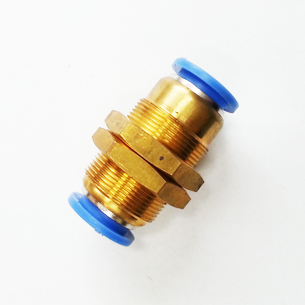
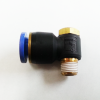
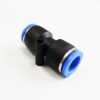
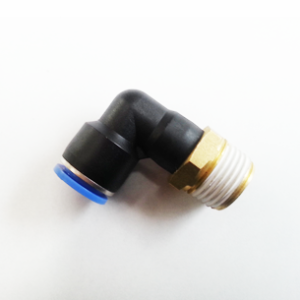
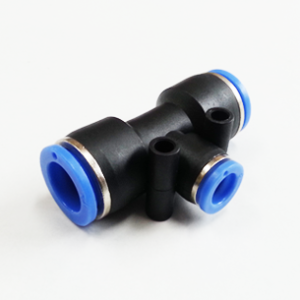
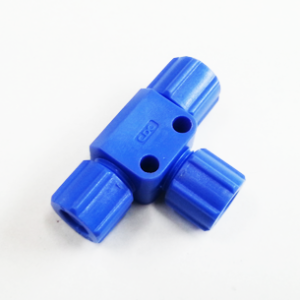
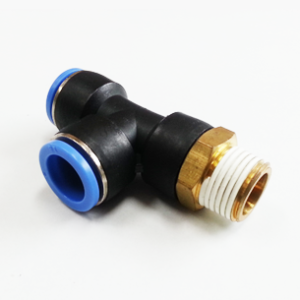
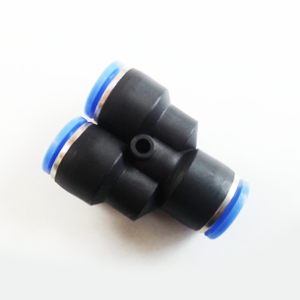
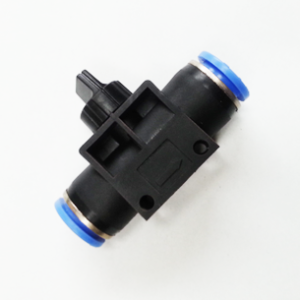
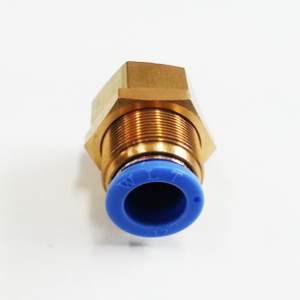
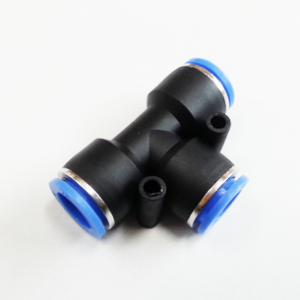
Reviews
There are no reviews yet.